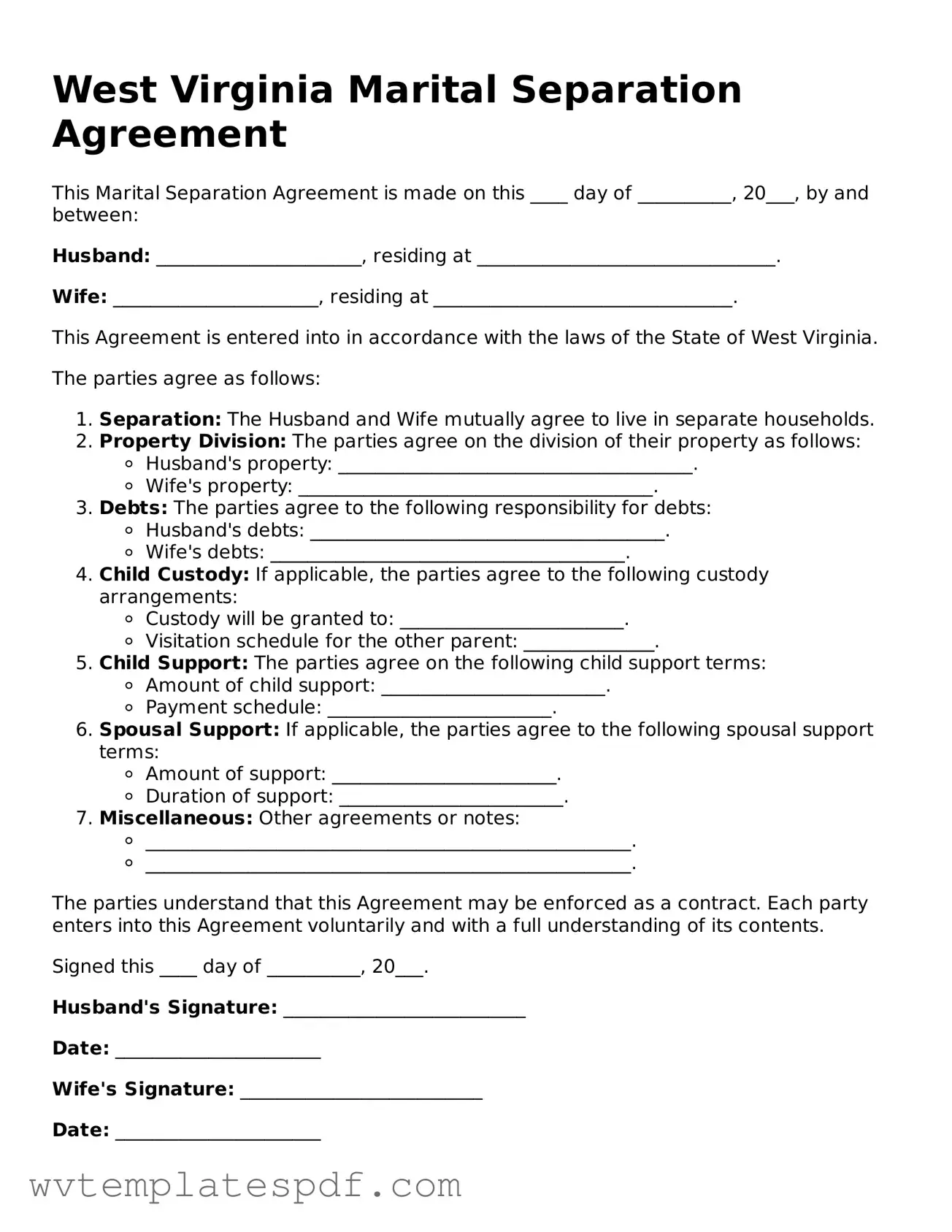Filling out the West Virginia Marital Separation Agreement form can be a daunting task. Many individuals make common mistakes that can lead to complications down the line. Understanding these pitfalls can help ensure that the agreement is valid and serves its intended purpose.
One frequent mistake is failing to include all relevant parties. It is essential to list both spouses' names clearly. Omitting a name or misspelling it can create legal issues later. Additionally, both parties must sign the agreement for it to be enforceable. Neglecting to obtain a signature can render the document ineffective.
Another common error is not being specific about the terms of the separation. Vague language can lead to misunderstandings and disputes. For instance, when discussing the division of assets or debts, clarity is crucial. Each item should be detailed, specifying who gets what and how debts will be handled.
People often overlook the importance of addressing child custody and support arrangements. If children are involved, the agreement should clearly outline custody arrangements, visitation rights, and child support obligations. Failing to do so can result in confusion and potential legal battles in the future.
Additionally, many individuals forget to consider tax implications. The agreement should address how taxes will be handled, especially concerning alimony and child support. Misunderstanding these aspects can lead to unexpected financial burdens.
Another mistake is neglecting to update the agreement after significant life changes. Life events such as job changes, relocations, or changes in the children’s needs may necessitate revisions. Keeping the agreement current ensures that it remains relevant and enforceable.
People sometimes fail to seek legal advice before finalizing the agreement. While it may seem straightforward, the complexities of marital separation can be overwhelming. Consulting with a legal expert can provide valuable insights and help avoid costly mistakes.
In addition, some individuals may not fully understand the implications of their decisions. For example, agreeing to waive spousal support without considering future financial needs can lead to hardship. It is vital to think through the long-term consequences of each provision in the agreement.
Lastly, individuals often underestimate the importance of having the agreement notarized. While it may not be a legal requirement in all cases, notarization adds an extra layer of authenticity. It can help prevent disputes about the validity of the signatures and the agreement itself.
By being aware of these common mistakes, individuals can approach the West Virginia Marital Separation Agreement form with greater confidence. Taking the time to ensure accuracy and clarity can lead to a smoother separation process and a more amicable resolution.
